Stories
Stories
Failed to Return
In wartime, telegrams were used by governments needing to communicate quickly and efficiently. They were often used to send notice of a servicemen’s death, capture or wounding. As telegrams were expensive, they were not widely used for general communication, so for the families of those serving, the arrival of a telegram was associated with bad news. 75 Sq. historian Chris Newey has written a fascinating story regarding Dougie Williamson, well known to many in NZBCA, as the Flight Engineer on 75’s C Flight Lancaster HK601, JN-D “Dog”.
Catching up with Dougie and Janet Williamson one day, Janet produced a folder marked “RAF,” in which she had kept a number of items relating to Doug’s air force days. Included was a set of original letters and telegrams that Doug’s parents had received when he was reported missing over Germany on the night of the 4th/5th of April 1945. They had been kept by his mother and passed down to Doug’s sister and then back to Dougie by a nephew in 2012.
They form a remarkable record of the efforts by the authorities to contact and inform the family when an airman went missing, and they are testimony to the level of administration and detail involved in this sad job. Reading them also reminds us of how the families must have dreaded the prospect of receiving this kind of news.
The first communication was a telegram from RAF Mepal, sent on the 5th of April, the same day that Doug failed to return from the Merseburg op’, addressed to his father. It must have been a terrible shock
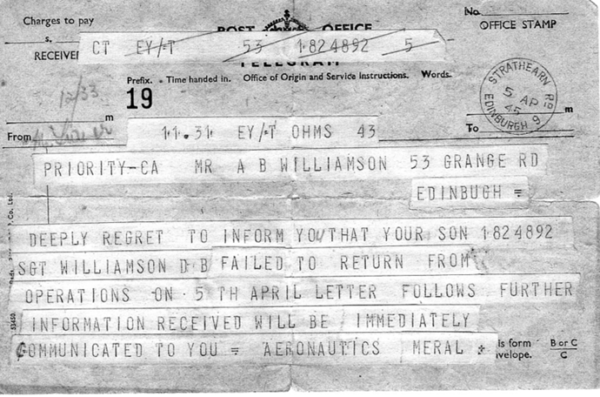
Caption: XXX
(Credit: XXX)
The letter referred to in the telegram was sent the following day, the 6th of April, by 75(NZ) Squadron’s Commanding Officer, Wing Commander C.H. “Mac” Baigent DFC and Bar:
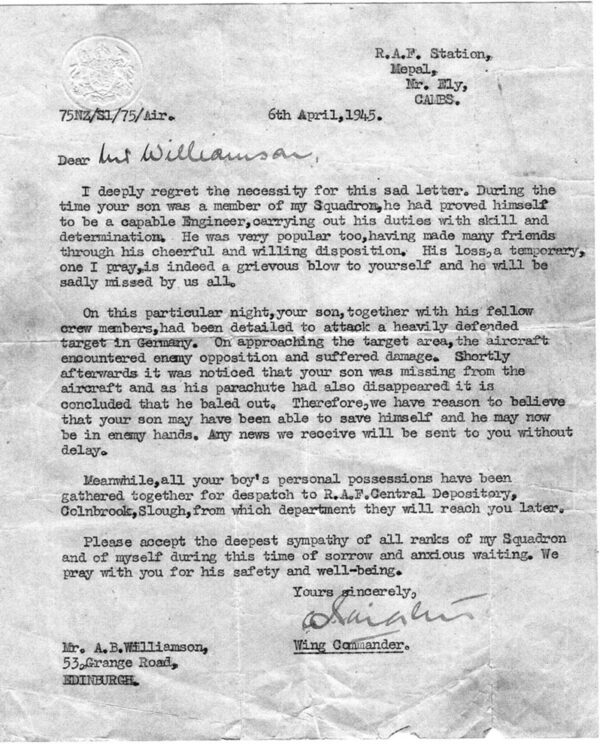
Caption: XXX
(Credit: XXX)
By the strangest of coincidences, I spent the rest of that afternoon with W/C Mac Baigent’s daughter!! I showed this letter to her, and she asked if she could have a copy – a serious and stressful side to her father’s responsibilities as Commanding Officer that she wasn’t aware of, and one that could easily go un-appreciated. Those letters can’t have been easy to write …
The Williamson family next received a hand-written letter from the squadron’s Chaplain, Squadron Leader Reverend J.C. Harkus.
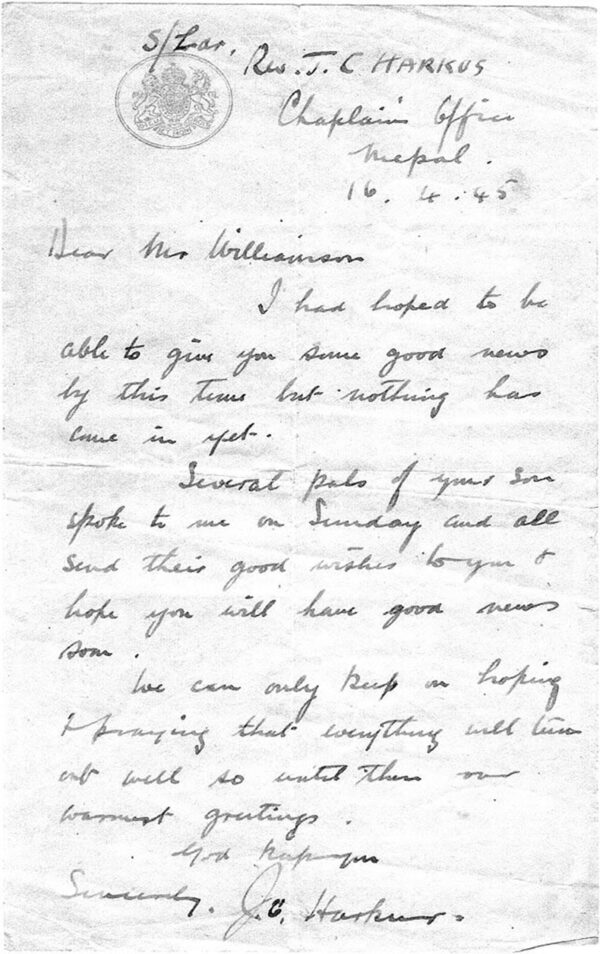
Caption: XXX
(Credit: XXX)
The letter reads:
Dear Mr Williamson,
I had hoped to be able to give you some good news by this time but nothing has come in yet.
Several pals of your son spoke to me on Sunday and all send their good wishes to you and hope you will have good news soon.
We can only keep on hoping & praying that everything will turn out well so with this our warmest greetings.
God keep you
Sincerely
J C Harkus
Next was a letter from the Air Ministry Casualty Branch, dated the 19th of April, with some more detail about the incident:
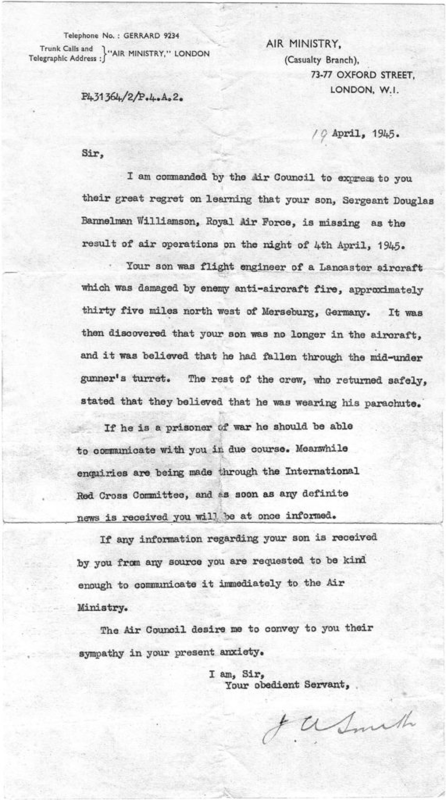
Caption: XXX
(Credit: XXX)
Then, on the 24th of April, less than three weeks after he went missing, the good news was delivered – Doug was safe!
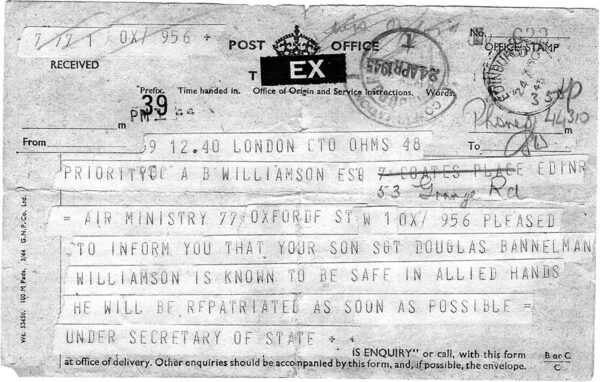
Caption: XXX
(Credit: XXX)
And last, and best of all for his parents, a telegram from Dougie himself:

Caption: XXX
(Credit: XXX)
Doug had made it safely back to England before the month ended, and even though he had only spent five nights in captivity (in a Police Station cell), was being processed as a POW, along with hundreds of others.
Offered two weeks’ leave, it was suggested that he should go home and see his family, which is what he did. They must have been very pleased to see him!
Thanks to Doug and Janet Williamson for sharing these fascinating letters and telegrams.
And thank you to Chris for allowing us to republish this account.